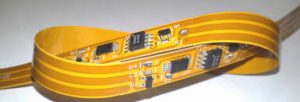design considerations for flexible pcb board
Designing flexible PCB (Printed Circuit Board) boards presents unique challenges and opportunities compared to traditional rigid PCBs. Flexible PCBs offer numerous advantages, including space savings, reduced weight, and the ability to conform to complex shapes. However, to fully leverage these benefits, several critical design considerations must be addressed.
Firstly, the choice of substrate material is a fundamental consideration. Flexible PCBs are typically made from materials such as polyimide or polyester, which provide the necessary flexibility and thermal stability. Polyimide, for instance, is preferred for its excellent thermal resistance, mechanical stability, and ability to withstand repeated flexing. The substrate must be carefully selected based on the specific requirements of the application, including the environmental conditions and mechanical stresses it will encounter.
Another essential factor is the thickness of the flexible pcb board. Thinner substrates offer greater flexibility but may be more prone to damage during handling and assembly. Conversely, thicker substrates provide better mechanical strength but reduce flexibility. Designers must strike a balance between flexibility and durability to ensure the PCB can withstand the intended operating conditions without failure.

What are the design considerations for flexible pcb board?
The layout and routing of the circuitry on a flexible PCB require careful consideration. To maintain flexibility, traces should be routed with smooth, curved paths rather than sharp angles, which can create stress points and lead to cracking or delamination. Additionally, trace width and spacing must be optimized to minimize signal integrity issues and ensure reliable performance. Designers should also consider the use of staggered or serpentine traces to accommodate bending and folding without compromising electrical continuity.
Mechanical reinforcement is another critical aspect of flexible PCB design. Areas that will experience frequent bending or mechanical stress, such as connection points and transition zones, may benefit from the addition of stiffeners. Stiffeners, typically made from materials like FR4 or stainless steel, provide localized rigidity and protect the PCB from mechanical damage. They are particularly useful in areas where connectors are mounted, ensuring reliable electrical connections even under repeated flexing.
Thermal management is an important consideration, especially for applications involving high power or high temperatures. Flexible PCBs can incorporate thermal vias and heat sinks to dissipate heat effectively. Additionally, the selection of thermally conductive adhesives and materials can enhance the thermal performance of the PCB, ensuring that it operates reliably within the specified temperature range.
Manufacturing processes and assembly techniques also play a crucial role in the design of flexible PCBs. The flexibility of the substrate requires careful handling during assembly to avoid damage. Automated assembly processes must be tailored to accommodate the unique characteristics of flexible PCBs, including the use of specialized fixtures and tooling. Moreover, the choice of soldering techniques, such as reflow or wave soldering, must be compatible with the thermal properties of the flexible substrate to prevent warping or delamination.
Testing and validation are indispensable steps in the design process of flexible PCBs. Rigorous testing under simulated operating conditions, including thermal cycling, mechanical bending, and environmental exposure, is necessary to ensure the reliability and performance of the final product. Comprehensive testing helps identify potential failure modes and allows for design modifications before mass production.
In conclusion, designing flexible PCBs involves a complex interplay of material selection, mechanical design, thermal management, and manufacturing processes. By carefully addressing these considerations, designers can create flexible PCBs that offer the desired performance, reliability, and longevity for a wide range of applications. The unique benefits of flexible PCBs make them an increasingly popular choice in various industries, from consumer electronics to aerospace, where adaptability and space efficiency are paramount.



